History of Tyumen
Foundation of Tyumen
In the 13th-16th centuries, on the banks of the Tyumenka River, there was the capital of the Tyumen Khanate - Chingi-Tura. The construction of the Russian fortified settlement of Tyumen began near the remains of Chingi-Tura in the summer of 1586, during the conquest of Siberia by the Russians.
In the Russian chronicles of the 16th century, the Tyumen Khanate was called “Great Tyumen”. “Tumen” (“tyumyan”) in Turkic languages means “lower reaches of the river”, “lowland”. The same word also means a military unit 10 thousand people strong.
Tyumen was founded as an outpost for the conquest and development of Siberia and the Far East on the old caravan road from Central Asia to the Volga region. Waterways connected Tyumen with the lands of the Far North and East. The original population of Tyumen, as a frontier town, consisted of boyars (Russian nobility), streltsy (Russian firearm infantry), and Cossacks. In 1616, the Trinity Monastery was founded in Tyumen by the monk Nifont.
In the first years after its foundation, Tyumen was subjected to attacks by Tatars and Kalmyks. Over time, with the disappearance of the military threat, crafts became the primary occupation of the townspeople (blacksmithing, bell-making, soap-making, and tanning).
More Historical Facts…
Tyumen in the 17th-19th centuries
One century after its foundation, about 2 thousand people lived in Tyumen. In 1695, a fire broke out, as a result of which the wooden town burned down. After that, stone construction began in Tyumen. Of the stone structures of that time, the complex of buildings of the Trinity Monastery has been preserved.
At the beginning of the 18th century, Tyumen was a major transit point for trade; trade routes from China and all of Siberia to the center of Russia passed through the town. Tyumen was famous for the production of furniture and other wood products. In 1763, 6,593 people lived here, of whom 317 were artisans.
In the 19th century, simultaneously with the decline of Tobolsk, rapid growth began in Tyumen. In 1836, the first steamer in Siberia was launched in Tyumen. It became one of the largest river shipbuilding bases in the Russian Empire. In 1885, the Yekaterinburg-Tyumen railway was put into operation. At the end of the century, the cargo turnover of the Tyumen port reached 230 thousand tons per year, and the port itself was called “the gateway to Siberia”.
By the beginning of the 20th century, the number of residents of Tyumen reached 30 thousand and exceeded the population of Tobolsk. In Tyumen, there were 117 factories, including 3 shipyards, 2 steam mills, 70 tanneries, and other enterprises. In 1913, the Tyumen-Omsk railway connected the city with the Trans-Siberian Railway.
Tyumen in the 20th century and beyond
From 1923 to 1934, Tyumen was the center of the Tyumen District within Ural Oblast. On January 17, 1934, this huge region was divided into three oblasts - Sverdlovsk Oblast with the center in Sverdlovsk (Yekaterinburg), Chelyabinsk Oblast with the center in Chelyabinsk, and Ob-Irtysh Oblast with the center in Tyumen. From December 7, 1935 to August 14, 1944, Tyumen was part of Omsk Oblast. In 1939, the population of Tyumen was 79,205 people.
During the Second World War, the industrial potential of Tyumen increased significantly due to the enterprises evacuated from the European part of the USSR. In total, 22 evacuated enterprises were operating in the city, producing armored boats, mortars, motorcycles, electrical equipment for tanks, shells, mines, short fur coats, felt boots, and food. About 20 thousand residents of Tyumen fought at the front.
On August 14, 1944, Tyumen Oblast was formed - the largest region in the country in terms of area. The distance from the southernmost point of the region to the northernmost point was 2,100 km, and from west to east - 1,400 km. Tyumen became the administrative center of this new region.
In the 1960s, large deposits of oil and natural gas were discovered in the north of the Tyumen region, which became a new page in the history of Tyumen. In 1966, the construction of the Tyumen - Tobolsk - Surgut - Nizhnevartovsk railway began. A lot of enterprises of the city began to work for the oil and natural gas extraction industry.
Tyumen became the starting point and transshipment point for the delivery of goods to the North. New specialized enterprises, design institutes, and higher educational institutions were opened in the city. From 1959 to 1979, the population of Tyumen doubled - from 150 to 359 thousand people.
Tyumen Oblast became the country’s main oil and natural gas energy base. By the end of the 1980s, about 400 million tons of oil and 574 billion cubic meters of natural gas were annually produced here. In 1989, the population of Tyumen was 476,869 people.
In the 2010s, Tyumen was significantly transformed: new micro-districts, roads, bridges were built, streets were expanded. In 2015, the 700 thousandth inhabitant of the city was born. In 2020, the population of Tyumen exceeded 800 thousand people. In today’s Russia Tyumen is one of the fastest growing cities.
Streets of Tyumen
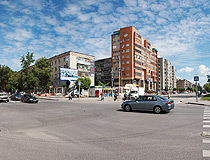
Summer in Tyumen
Author: O.Frolov
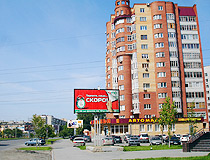
Apartment house in Tyumen
Author: Nesmachnykh Konstantin
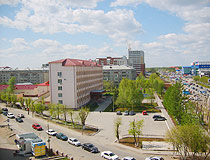
Spring in Tyumen
Author: Shatalov Vladimir
Tyumen - Features
Tyumen is located in the south of Western Siberia, in the Asian part of Russia, on both banks of the Tura, the left tributary of the Tobol River. Tyumen is a large industrial city, the oil and natural gas capital of Russia, as the administrative center of the largest oil and natural gas producing region. The City Day of Tyumen is celebrated on the last Saturday of July.
The climate in Tyumen is transitional from moderately continental to sharply continental. The average temperature in January is minus 15 degrees Celsius, in July - plus 18.8 degrees Celsius. The warm period lasts only 3-4 months here. The longest seasons are autumn and spring. The weather in the city can change quickly, in the morning it is sunny and warm, and in the evening it is snowy and frosty.
Today’s coat of arms of Tyumen is generally very similar to the historical coat of arms approved in 1785. The image of a wooden river boat, according to the historical description, means that “from this town begins sailing along the rivers of all Siberia.”
The Trans-Siberian Railway “Moscow - Vladivostok” passes through Tyumen. At present, it is the only transcontinental railway that completely passes through the territory of Russia. It is adjoined by the Tyumen - Novy Urengoy railway line, which serves the transportation of the northern regions. The main feature of the Tyumen transport hub is that it is the only point of connection to the all-Russian transport network of the main transport communications of the Khanty-Mansiysk Autonomous Okrug - Yugra and the Yamalo-Nenets Autonomous Okrug.
The main air gateway to Tyumen is the international airport “Roshchino” named after D. I. Mendeleev. Located about 13 km west of Tyumen, this airport offers regular flights to such cities as Kaliningrad, Krasnodar, Moscow, Nizhnevartovsk, Novy Urengoy, Perm, Rostov-on-Don, Salekhard, St. Petersburg, Sochi, Surgut, Ufa, Khanty-Mansiysk, and a number of others.
Oil and natural gas of the Tyumen region contributed to the rapid growth of scientific organizations in the city. In total, several dozen research and design institutes are located here. Fundamental science is represented by the Institute of the Earth’s Cryosphere and the Institute for the Problems of the Development of the North. Applied science is focused on the needs of the oil and natural gas industry. Thousands of students study in 15 higher education institutions.
The beautiful wooden architecture of Tyumen should be noted separately. The unique carved decoration of the Tyumen buildings of the second half of the 19th - early 20th centuries uses the traditions of Russian decorative art, folk motives, as well as creatively reworked artistic techniques of the Renaissance, Baroque, Classicism, and partly Art Nouveau. Often, styles are combined, complemented by local motifs, forming a unique look of wooden architecture, characteristic only of Tyumen.
There are 17 federal cultural heritage sites in Tyumen. Among the specially protected natural areas in the city are the Botanical collection of the biological faculty of Tyumen State University (3 hectares), as well as the regional natural monuments Forest Park named after Yu.A. Gagarin (105 hectares) and the Zatyumensky Forest Park (77 hectares). In the vicinity of Tyumen there are about five hot (37-50 degrees Celsius) geothermal springs.
Interesting facts from the history of Tyumen during World War II
During the war, the body of V. I. Lenin was evacuated from Moscow to Tyumen; the functions of the mausoleum were temporarily performed by the building of the current Tyumen State Agricultural Academy.
In 1942, a single copy of a winged tank was built in Tyumen. Developed by aircraft designer Antonov from 1941 to 1943, it was a T-60 tank loaded on a glider (“Wings of a Tank”).
In February 1944, for two weeks, the Tyumen militia were catching cats in the city to send them to the Hermitage (Leningrad), where during the blockade numerous rodents bred, posing a threat to works of art. 238 cats were sent to the northern capital of Russia and gave rise to a new population of Leningrad cats.
Main Attractions of Tyumen
Embankment of the Tura River - one of the main walking areas of Tyumen. It is especially pleasant to walk here in the summer heat. The length of the embankment is 4 km. It runs along the right bank of the Tura River in the central part of the city. The four levels of the embankment have a total height of 24 meters. City holidays, festivals, concerts, etc. are held here.
At night, the Tyumen embankment looks especially beautiful, thanks to the illumination of the Lovers’ Bridge (a cable-stayed pedestrian bridge, where newlyweds come after the solemn registration of marriage). There are cafes and restaurants within walking distance from the embankment. The Tura River is navigable, so you can look at the Tyumen embankment from the water during a boat trip.
Tsvetnoy Boulevard - a pedestrian street 800 meters long, passing through the center of Tyumen between Ordzhonikidze and Pervomayskaya streets. It is a very popular place for recreation and walking among locals and tourists. In summer, city celebrations, concerts, and festivals take place here, in winter they organize an ice town with slides, ice sculptures, and bright lighting. Along the street there are cafes, shopping centers, a movie theater, a sports complex, and a circus. On one of the squares there is the fountain “Four Seasons” with a picturesque stained glass dome.
There are a lot of sculptures on the boulevard, the characters most beloved by the locals - clowns Nikulin, Karandash, and Oleg Popov - can be found near the Tyumen circus. The name “Tsvetnoy” was coined by analogy with Tsvetnoy Boulevard in Moscow, because a circus is also located on it. In the amusement park, you can enjoy a beautiful view of Tyumen from the Ferris wheel.
Siberian Cats Square - a unique place of its kind, often included in the lists of the most original sights of Tyumen. In 2008, on this then unnamed alley, 12 cast-iron gilded figures of cats were installed, sitting in different poses on stone pedestals.
This was done in memory of the fact that during the Second World War, after the blockade of Leningrad was broken, about 5 thousand cats were sent to the city from different places of the country to catch numerous rats. By that time, there were no cats in Leningrad, they were all eaten. 238 cats were taken from Tyumen to the northern capital specifically to protect the priceless storage facilities of the Hermitage and other Leningrad palaces and museums. Pervomayskaya Street, 11.
Tyumen Regional Museum of Fine Arts - one of the best art museums beyond the Urals. The exposition includes a unique collection of Russian portrait painting of the 18th - early 20th centuries, paintings created by Western European artists of the 17th-19th centuries, as well as art works by Soviet and contemporary artists and sculptors. Decorative and applied art is represented by porcelain from the Imperial Factory, a collection of Tobolsk carved bones, clay toys, and much more. Sovetskaya Street, 63.
Museum of Local Lore “The City Duma” - a museum located in the very center of the city, not far from the embankment and the Lovers’ Bridge, in a building that is an architectural monument (the first civil stone building in Tyumen, built in 1828-1834). Previously, the City Duma and the Tyumen archive were located here. Today, here you can see ethnographic, archaeological, natural science collections, as well as objects of handicrafts and decorative and applied arts. Lenina Street, 2.
Holy Trinity Monastery - a majestic religious monument with gilded domes and laconic white facades located on the bank of the Tura River, an architectural monument of federal significance. This is one of the oldest monasteries in Siberia, founded in 1616.
Today, it is one of the most famous and popular architectural religious complexes throughout Siberia. It is advisable for tourists to dress according to the weather, comfortable and not provocative, in accordance with the rules of the Russian Orthodox Church (women must have a skirt, as well as a scarf covering their heads). Kommunisticheskaya Street, 10.
Church of the Exaltation of the Cross (1774-1791) - one of the most famous architectural landmarks of Tyumen, built in the Baroque style. Lunacharsky Street, 1.
Church of the Savior (1796-1819) - one of the oldest and most expressive churches in Tyumen, an architectural monument of federal significance. This building combines in its architecture the Siberian Baroque of the late 18th century and the Russian style of the early 20th century. Chelyuskintsev Street, 44.
Znamensky Cathedral (1786-1801) - the main church in Tyumen built in the Siberian Baroque style. This majestic, snow-white building with an abundance of blue and gilded details looks incredibly sophisticated. Semakova Street, 13.
Gilevskaya Grove - a picturesque forest park with almost 80 hectares of dense forest, a river, and a lake, one of the most favorite places for recreation and walks in Tyumen. On the territory there are scooter and bicycle rental, asphalt paths for jogging and cycling, gazebos for picnic and barbecue, etc. Gilevskaya Roshcha, 1
Hot springs “Verkhniy Bor” - a recreation center located about 15 km from Tyumen. Here you can swim in pools both in summer and in winter, when it is minus 30 degrees Celsius outside. The water temperature reaches plus 40 degrees Celsius. Bathing in healing hot waters has a positive effect on human health. A visit to “Verkhny Bor” is recommended for people with respiratory and cardiovascular diseases.
Monument to Grigory Rasputin - an art object located in the heart of Tyumen, in Aptekarskiy Garden, near the city Perinatal Center. Grigory Rasputin (1869-1916) is a highly controversial personality in Russian history known for his friendship with the family of the last Russian emperor Nicholas II. They believed that he had the talents of perspicacity and healing. This gave Rasputin the opportunity to exert a great influence on the administration of the Russian Empire in the last years of its existence.
This monument was erected here for a reason. In the summer of 1914, Rasputin was taken to a hospital located near the garden with a knife wound to the abdominal cavity. He was brought from afar, from his native village of Pokrovskoye. Later, for some time, Rasputin worked here as a medical orderly.
The sculpture is a full-length image of Rasputin - a tall man with a thick beard. He is dressed in the so-called “Siberian coat” - a traditional Russian caftan. The left hand rests on a Viennese chair - an exact copy of the original chair from the Rasputin Museum located in the village of Pokrovskoye. There are city legends about this monument. It is said that men, by sitting down on this chair, can be cured of their illnesses, as well as get a career progression. Daudel’naya Street, 7.
Grigory Rasputin Museum. This museum is located in the village of Pokrovskoye (Sovetskaya Street, 79), about 80 km from Tyumen, if you drive in the direction of Tobolsk. A lot of secrets, mysteries, and hoaxes are associated with the name of Rasputin. Therefore, visiting this museum will be interesting for those who are interested in Russian history.
The museum was created thanks to the enthusiasm of fellow villagers of Rasputin in 1990. They collected things and documents related to his personality and family. It was the first private museum in the USSR. The building of the museum is not much different from the rest of the village houses on this street, but this is not the original house in which the Rasputin family lived, but a reconstructed one. The original one was demolished in 1980. Every Saturday and Sunday, at 11:00 am, a two-hour excursion is held.



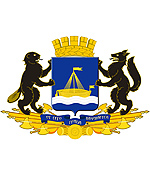
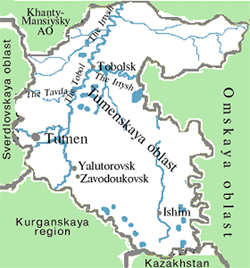



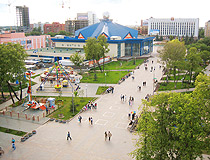
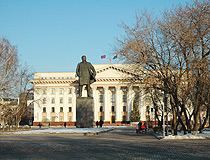
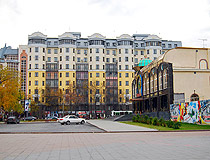
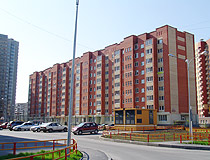
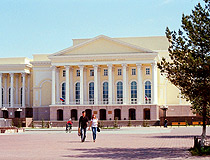
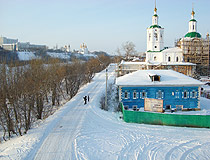
The comments of our visitors
All 5 comments